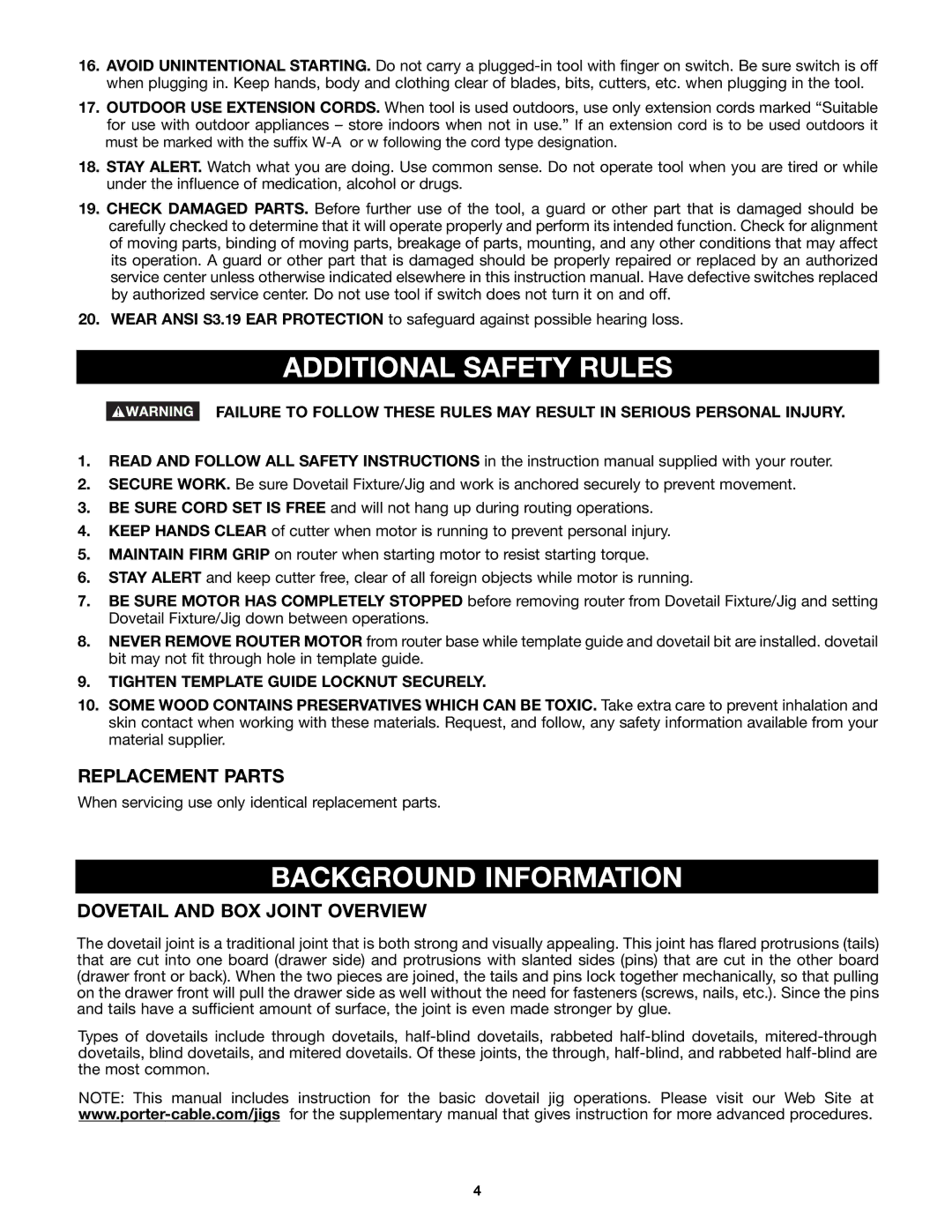
16.AVOID UNINTENTIONAL STARTING. Do not carry a
17.OUTDOOR USE EXTENSION CORDS. When tool is used outdoors, use only extension cords marked “Suitable for use with outdoor appliances – store indoors when not in use.” If an extension cord is to be used outdoors it must be marked with the suffix
18.STAY ALERT. Watch what you are doing. Use common sense. Do not operate tool when you are tired or while under the influence of medication, alcohol or drugs.
19.CHECK DAMAGED PARTS. Before further use of the tool, a guard or other part that is damaged should be carefully checked to determine that it will operate properly and perform its intended function. Check for alignment of moving parts, binding of moving parts, breakage of parts, mounting, and any other conditions that may affect its operation. A guard or other part that is damaged should be properly repaired or replaced by an authorized service center unless otherwise indicated elsewhere in this instruction manual. Have defective switches replaced by authorized service center. Do not use tool if switch does not turn it on and off.
20.WEAR ANSI S3.19 EAR PROTECTION to safeguard against possible hearing loss.
ADDITIONAL SAFETY RULES
FAILURE TO FOLLOW THESE RULES MAY RESULT IN SERIOUS PERSONAL INJURY.
1.READ AND FOLLOW ALL SAFETY INSTRUCTIONS in the instruction manual supplied with your router.
2.SECURE WORK. Be sure Dovetail Fixture/Jig and work is anchored securely to prevent movement.
3.BE SURE CORD SET IS FREE and will not hang up during routing operations.
4.KEEP HANDS CLEAR of cutter when motor is running to prevent personal injury.
5.MAINTAIN FIRM GRIP on router when starting motor to resist starting torque.
6.STAY ALERT and keep cutter free, clear of all foreign objects while motor is running.
7.BE SURE MOTOR HAS COMPLETELY STOPPED before removing router from Dovetail Fixture/Jig and setting Dovetail Fixture/Jig down between operations.
8.NEVER REMOVE ROUTER MOTOR from router base while template guide and dovetail bit are installed. dovetail bit may not fit through hole in template guide.
9.TIGHTEN TEMPLATE GUIDE LOCKNUT SECURELY.
10.SOME WOOD CONTAINS PRESERVATIVES WHICH CAN BE TOXIC. Take extra care to prevent inhalation and skin contact when working with these materials. Request, and follow, any safety information available from your material supplier.
REPLACEMENT PARTS
When servicing use only identical replacement parts.
BACKGROUND INFORMATION
DOVETAIL AND BOX JOINT OVERVIEW
The dovetail joint is a traditional joint that is both strong and visually appealing. This joint has flared protrusions (tails) that are cut into one board (drawer side) and protrusions with slanted sides (pins) that are cut in the other board (drawer front or back). When the two pieces are joined, the tails and pins lock together mechanically, so that pulling on the drawer front will pull the drawer side as well without the need for fasteners (screws, nails, etc.). Since the pins and tails have a sufficient amount of surface, the joint is even made stronger by glue.
Types of dovetails include through dovetails,
NOTE: This manual includes instruction for the basic dovetail jig operations. Please visit our Web Site at
4
